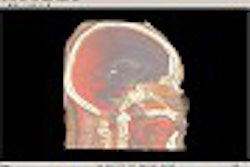A spike in the number of abdominal MR exams performed in the U.S. could be attributed to the modality's growing popularity in university centers, according to a study that analyzed body MRI and CT trends.
Drs. Donald Mitchell, Laurence Parker, and David Levin from Thomas Jefferson University in Philadelphia, along with Jonathan Sunshine, Ph.D., from the American College of Radiology in Reston, VA, looked at the variations and trends in MRI and CT volume based on information from Medicare and fee-for-service health insurance databases.
"At the start of our study, we hypothesized that the variations in MR imaging equipment and training of radiologists would manifest as regional variation in the utilization of body MR imaging," they wrote in the American Journal of Roentgenology. They also estimated that recent MR technical innovations would result in a higher rate of utilization for body MR than for whole-body CT, but that usage would vary according to the type of provider (AJR, July 2002, Vol.179:1, pp. 27-31).
For this study, Centers for Medicare and Medicaid Services (CMS) Physician/Supplier Procedure Summary Master Files were amassed from the years 1993, 1996, and 1999. The group focused on the CPT-4 codes for pelvic, abdominal, chest, neurologic, and extremity MRI and CT. For each group of procedures, they calculated volume, relative percentage, and the utilization rate per 100,000 beneficiaries. They also examined volume on a regional basis, and did a separate analysis on a fee-for-service health insurance database from a single northeastern state.
According to the Medicare database, in 1993, total MR volume for the categories above was about 1.6 million. Total CT volume in the same regions was 7.3 million. From 1993 to 1996, there was a 21% increase in MR imaging and an 8.6% increase in CT volume. The rate of the volume increase for MR was double (62%) compared with CT (31%) from 1993 to 1999, the group reported.
"Abdominal MR imaging showed a much greater increase than did the other body MR imaging procedures. The increase in abdominal MR imaging was almost entirely restricted to the interval between 1996 and 1999, during which time it increased by more than 100%. In 1993 and 1996, MR imaging was performed more commonly for the pelvis than the abdomen. By 1999, abdominal MR imaging had become more common," they wrote.
MRI of the chest, including breast and cardiac studies, decreased by 13.6% from 1993 to 1996, but then climbed back up by 10.1% from 1996 to 1999. During the entire 6-year period through 1999, extremity MRI experienced the largest relative rate, growing by 45.1%.
In comparison, more pelvic, abdominal, and chest studies were performed with CT during these years. In 1993, 1.9 million abdominal CT exams were logged compared to a little less than 27,000 MR abdominal procedures. Between 1993 and 1999, the volume of pelvis and chest CTs increased by 60% and abdominal CT went up by 28%.
In the Medicare regions selected for this study (Atlanta, Boston, Chicago, Dallas, Denver, Kansas City, New York, Philadelphia, Seattle, and San Francisco), the utilization of abdominal MRI increased between 1996 and 1999, recovering from an earlier dip. In urban and suburban locations within these regions, abdominal MR accounted for 4.1% of all MR imaging. Finally, the proportion of abdomen, pelvis, and chest MR exams done at teaching institutions (7%) was double that of nonteaching institutions (3.5%).
"This analysis showed that body MR imaging frequency, especially for the abdomen, is higher in urban centers and at teaching hospitals," they said. "We suspect that most abdominal and pelvic MR imaging is performed in or near university centers or other centers of expertise, and that diffusion into the community is at an early stage."
While CT is the more established modality -- in part because many physicians still consider it to be the preferred method for cross-sectional imaging -- MR has made serious inroads to becoming a standard modality for abdominal imaging. This upward trend should continue as equipment and training become more widely available, the study concluded.
By Shalmali PalAuntMinnie.com staff writer
August 7, 2002
Related Reading
Multislice CT adoption on the upswing, June 13, 2002
IMV releases MRI report, June 11, 2002
Medicare data shows odd trend for myelography, November 29, 2001
Radiologists perform more emergency x-ray exams, March 1, 2001
Copyright © 2002 AuntMinnie.com



















